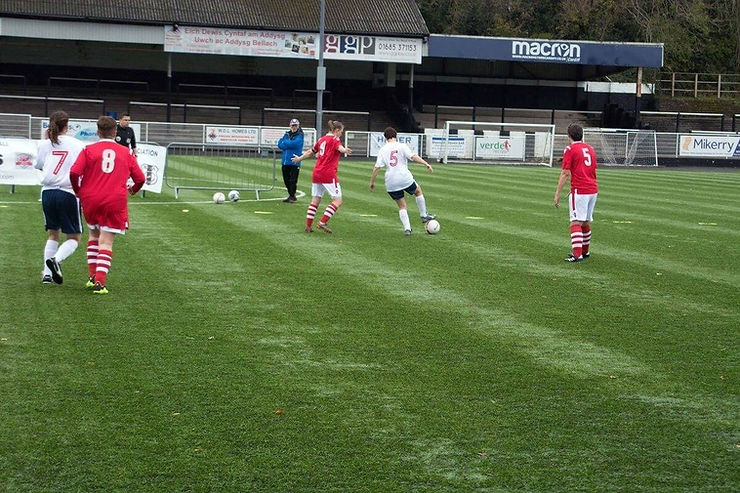By: Isabelle Wang
Gary Clark, a soccer fanatic, was devastated after he learned that he couldn’t play soccer anymore without injuring himself. He had to quit at age 48 due to medical conditions. Soccer’s physical demands prevent older people like Clark from participating because the amount of running it requires is likely to damage an older person’s knees and ankles. The solution to this problem arrived in 2011 when a variation of soccer without any running emerged. At first, people joked about it, but then it became popular as more people who couldn’t run or had a disability or illness started to play the sport.
The rules of walking soccer are that players cannot run or jump. One foot must always be on the ground. Other rules in walking soccer differ from soccer to prevent accidents or injuries. For example, tackling is only allowed if you aren’t making any contact; every free kick is indirect, and the ball must never reach above head height. Also, there are only six people per team instead of the usual eleven in regular soccer. A field for walking soccer is also smaller than a regular soccer. A walking soccer field is 55 to 65 yards long and 35 to 45 yards wide rather than the traditional 115 by 74 yards. The smaller size reduces the amount of moving needed and helps people with medical conditions be able to play.
Walking soccer has become so popular that there are about six hundred walking soccer or, as the Brits call it, “football clubs,” for men and women in England. England is also the home of the international governing body for walking football, the Federation of International Walking Football Associations, also called the FIWFA, which includes member organizations from Italy, Nigeria, Australia, South Korea, and India. The first World Nations Cup, the World Cup for walking soccer, will take place in August in the United Kingdom.
Walking soccer is also beneficial to your mental and physical health. Clark, who played with the Tri-City Walking Soccer Club for almost a year, said, “I have lost weight playing, so I think that’s a good sign.” George Gorecki, 62, has been playing since early 2019 with Walking Soccer Chicago, after being introduced to the sport by a friend from the U.K. He used to compete in a traditional soccer league with a club before arthritis in his left knee and right hip stopped him. Many elderly members of Walking Soccer Chicago could also not play traditional soccer because of medical conditions, so they started playing walking soccer.
This modified sport also helps people to socialize. In a study in 2022, seven men with mental health conditions like anxiety and depression played one hour of walking soccer and then had opportunities to meet new people and chat. The men reported that they enjoyed talking to people, made friends, and felt their life had a purpose. Walking soccer also helps elders who have lost a friend, or a partner, because they can lean on these social events to prevent them from being lonely. Ultimately walking soccer is an exciting new sport that is proving to be beneficial to your health in many ways.











